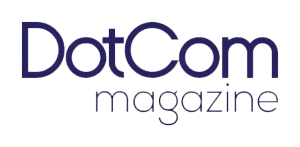Understanding how AI will change the diet and fitness tracking landscape is no longer optional—it’s essential. With new algorithms, sensors, and data analysis tools, the way we approach personal health and exercise is undergoing a fundamental transformation. From personalized nutrition to real-time fitness coaching, the question is not whether these changes will happen but how AI will change the diet and fitness tracking for millions worldwide. Whether you’re a casual fitness enthusiast or a professional athlete, getting ahead of how AI will change the diet and fitness tracking is key to optimizing performance, maintaining health, and staying informed in a tech-driven wellness era.
1. Personalized Nutrition Plans Powered by AI
Gone are the days when everyone followed the same generic diet plan. AI has enabled a new era of personalized nutrition that takes into account your age, genetics, microbiome, health goals, and even stress levels. Through machine learning models trained on vast datasets, AI systems can now tailor diet plans to meet your unique nutritional needs.
Apps like Zoe, NutriSense, or MyFitnessPal integrated with AI go beyond just calorie counting. They can predict how your body will respond to certain foods, calculate your glycemic response, and offer meal suggestions that maximize energy levels and reduce inflammation. For example, two people might respond differently to the same carbohydrate-rich meal; AI can flag these discrepancies and adapt accordingly.
The more you use these platforms, the smarter they become. With continuous learning, they adjust your diet based on your fitness progress, sleep quality, and metabolic feedback, creating a dynamic, intelligent meal plan that evolves with you.
2. AI-Powered Fitness Coaching in Real Time
Traditional fitness apps offered pre-recorded workouts or set routines. Now, AI fitness trackers and wearables are acting as virtual personal trainers, offering guidance and correction in real time. Using computer vision, motion sensors, and predictive analytics, AI can analyze your form, monitor your reps, and even detect fatigue levels.
Take Tempo or Tonal, for example—AI-equipped systems that provide personalized resistance training while analyzing every rep and recommending weight changes based on muscle fatigue. Apps like Freeletics or Fitbod create custom training plans based on progress and injury risk assessment.
This real-time feedback is particularly crucial for reducing injuries and ensuring optimal form—things even some human trainers might miss. AI is not just telling you what to do; it’s watching, learning, and coaching with remarkable precision.
3. Predictive Analytics for Health and Injury Prevention
AI excels at identifying patterns and predicting outcomes—two capabilities that are now central to preventing health issues and fitness-related injuries. By analyzing data from wearables like heart rate, sleep patterns, hydration levels, and training intensity, AI models can alert you to potential risks before they become problems.
For instance, if your resting heart rate starts trending upward alongside poor sleep and declining workout performance, AI can flag early signs of overtraining or illness. Similarly, runners can benefit from predictive insights that suggest changes in gait or training load, helping to avoid stress fractures or ligament injuries.
The power of prediction turns fitness tracking into a preventive healthcare tool, aligning wellness with longevity.
4. Emotional and Behavioral Insights for Sustainable Habits
One of the challenges in diet and fitness is behavior change. People often fall off track not because they don’t know what to do, but because they can’t sustain it. AI is helping bridge this gap by using emotional intelligence, natural language processing, and behavioral psychology to offer support.
Some platforms now use AI chatbots that provide motivational feedback, goal reinforcement, or timely nudges based on your personal data. Others analyze patterns in your food logging and fitness consistency, suggesting habit tweaks that align better with your natural rhythm.
For instance, if the AI detects that your morning workouts are frequently skipped but your energy peaks in the afternoon, it might suggest a schedule shift. These small but strategic adjustments drive long-term adherence.
5. Real-Time Food Recognition and Logging
Manual food logging has always been tedious and error-prone. AI is changing this with real-time food recognition powered by computer vision. You simply take a picture of your meal, and the AI identifies each item, estimates portion sizes, and logs the macronutrients instantly.
This drastically reduces friction in the diet tracking process. Apps like Bite.AI, CalorieMama, and even newer versions of MyFitnessPal use this technology to simplify logging while increasing accuracy. Some systems even analyze food temperature, texture, and preparation method to refine caloric estimates.
This advancement helps users stay consistent, which is one of the biggest predictors of success in any nutrition plan.
6. Sleep, Stress, and Recovery Integration
The future of diet and fitness tracking is holistic. AI doesn’t operate in a vacuum of food and exercise—it considers sleep quality, hormonal stress, and emotional health as key pillars of overall wellness.
Modern wearables track sleep stages, HRV (heart rate variability), and cortisol trends, feeding that data into AI models that adjust diet and fitness plans in real time. For example, if poor sleep is detected, the AI might lower your training volume the next day or recommend higher-protein meals to aid recovery.
This interconnected feedback loop makes your health plan more human—responsive, adaptable, and in tune with your physical and emotional needs.
7. Smarter Goal Setting with Adaptive Algorithms
AI helps eliminate unrealistic or vague goals like “lose weight” or “get fit.” Instead, it sets SMART (Specific, Measurable, Achievable, Relevant, Time-bound) objectives based on your baseline and preferences. As your performance changes, your goals adapt dynamically.
Let’s say you want to run a 10K in under 50 minutes. AI tracks your pace, VO2 max, training zones, and stride efficiency, recalibrating your plan every week to make your goal achievable. Similarly, if your fat-loss plateaus, AI adjusts your caloric deficit intelligently—without you needing to manually change anything.
Adaptive goal setting keeps users motivated and grounded in reality while still pushing them toward measurable progress.
8. Democratizing Access to Elite Fitness and Diet Expertise
Hiring a personal trainer or dietitian used to be a luxury. With AI, that level of expertise becomes available to virtually anyone with a smartphone. High-performance insights once reserved for pro athletes are now accessible to everyday users.
For example, platforms like WHOOP, Oura, or Garmin combine biometric data with AI analytics to deliver recovery protocols, nutritional suggestions, and training strategies that mimic what an Olympic coach might offer.
This democratization ensures that effective health guidance is no longer a privilege—it’s a widespread possibility.
9. Enhanced Community and Social Motivation Through AI
Social support is a well-known driver of adherence in diet and fitness programs. AI is now being used to foster more meaningful, data-driven communities. For instance, it can match users with similar goals, progress levels, or dietary needs for peer encouragement and accountability.
AI-based recommendation engines also surface community content—like meal ideas or workout hacks—that are likely to resonate with your routine. This helps create deeper engagement, particularly in large platforms where users may otherwise feel anonymous or lost.
In some cases, AI even gamifies the experience by introducing challenges, progress streaks, or achievement levels tailored to individual capabilities and motivation styles.
10. Long-Term Health Monitoring and Disease Prevention
AI in diet and fitness tracking is beginning to integrate more deeply into preventive medicine. By continuously monitoring vital data and lifestyle behaviors, AI can detect long-term trends that may signal chronic disease risk—such as Type 2 diabetes, hypertension, or metabolic syndrome.
For example, if your AI fitness assistant notices a gradual decline in VO2 max alongside increased visceral fat and reduced sleep efficiency, it might recommend clinical screening or direct you to a telehealth provider. These early warnings offer a powerful opportunity for prevention.
Some insurers and healthcare providers are even partnering with AI fitness platforms to offer premium discounts or risk-based health programs based on verified data.
Conclusion
Understanding how AI will change the diet and fitness tracking ecosystem is crucial if you want to stay ahead of the curve. These changes are not on the horizon—they’re happening now, and they’re affecting every aspect of how we eat, move, sleep, and recover. From personalized nutrition and predictive analytics to virtual coaching and chronic disease prevention, AI is building a world where our health routines are smarter, more responsive, and deeply personalized.
Instead of reacting to illness or burnout, we’re shifting toward a proactive, data-driven model of health—one that learns from us and evolves with us. To fully benefit, we must embrace this intelligent transformation with curiosity, discipline, and openness to continuous improvement. That’s how we’ll truly unlock the future of diet and fitness.














